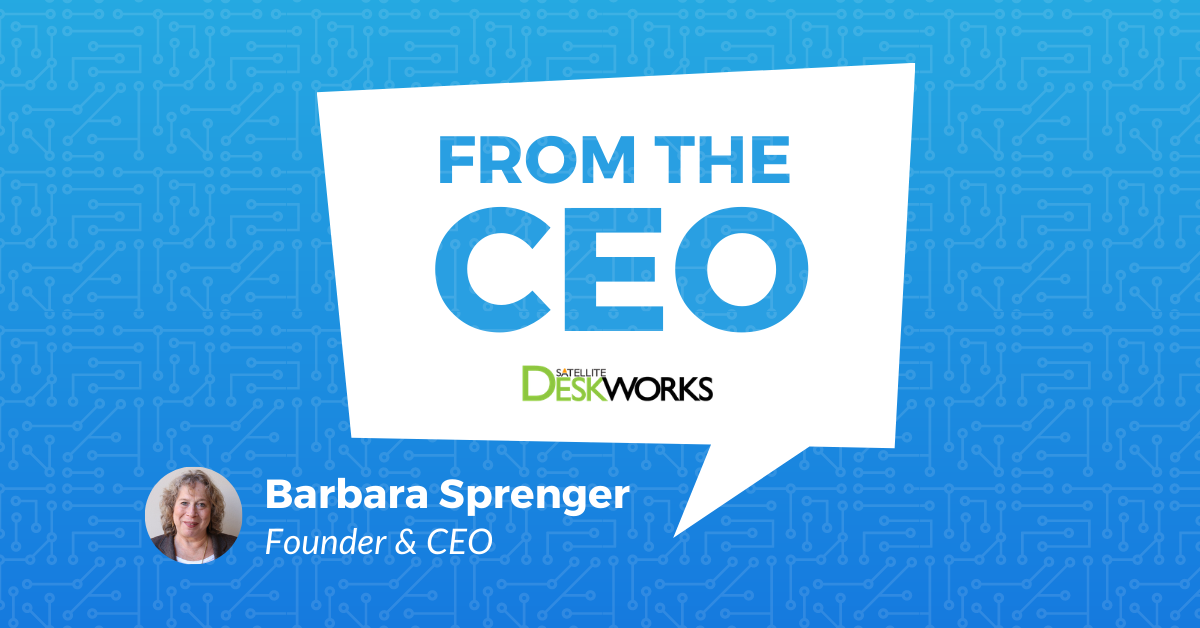Who knew that “hybrid” had so many uses?

Who knew that “hybrid” had so many meanings and uses?
The one we can’t get away from right now, though, relates to how in the world we’re going to bring people back to work: in person sometimes and remote sometimes. Hence, hybrid.
There are so many pieces of this, so let’s start from the bigger picture.
Employees have had a taste of skipping commutes—skipping those two hours a day that don’t enhance quality of life, don’t increase productivity for their employers, cost a fortune in gas and auto maintenance, keep you away from your kids for a ridiculous amount of time, and are just generally exhausting.
They’ve also had a chance to really examine what’s important to them and where they would live if they could live anywhere.
In our case, the majority of our Deskworks employees are now working remotely and don’t intend to come back. But they want to keep working for us — and they can.
Societally, we’ve seen what happens with fewer commutes: reduced emissions and cleaner air; kids (hopefully) bonding with parents; reduced impacts on roads.
We see what this could mean when we’re in more normal times. Our small towns, our city neighborhoods and our communities in general becoming more vibrant, with workers in town during the day.
For years, in our efforts to promote neighborhood coworking, we’ve shared this statistic: every FTE (full time equivalent employee) in California that doesn’t commute saves one million metric tonnes of CO2 equivalents per year.
And what have companies and employers found?
That employees can be productive, amazingly(!), working remotely. That you can manage by objectives rather than butts in seats. That you can expand your available labor pool if your reach is greater than an hour radius of headquarters. And that you can reduce your facility footprint and its exorbitant cost and only need perhaps 40 desks for 100 employees, while still having a well-functioning, creative, connected company.
The transition to a hybrid really isn’t as hard as it might appear. Employers have been managing a fully remote workforce for almost a year and a half. But to bring employees back to headquarters on a part-time schedule, employees need to self-manage booking a space, see which team members will be onsite so they can collaborate, and grab private space or meeting space as needed. Perhaps you want to limit the areas certain employees can use or have some people with full time dedicated space. And you need to quickly and easily get information and reports on how spaces are used and by whom, so you can refine the plan.
This is what coworking spaces have been doing for years. We built Deskworks to automate coworking spaces, and now we’ve stripped it down to be what you need as an employer bringing people back to the office.
Or back to the hybrid office.
Here with you,
Barbara

Barbara Sprenger
Founder & CEO of Deskworks
From Deskworks, ReserveMyDesk offers a comprehensive solution for flexible workspace as businesses navigate heading back to the office. Contact us or schedule a free demo to learn more about the power of ReserveMyDesk.





